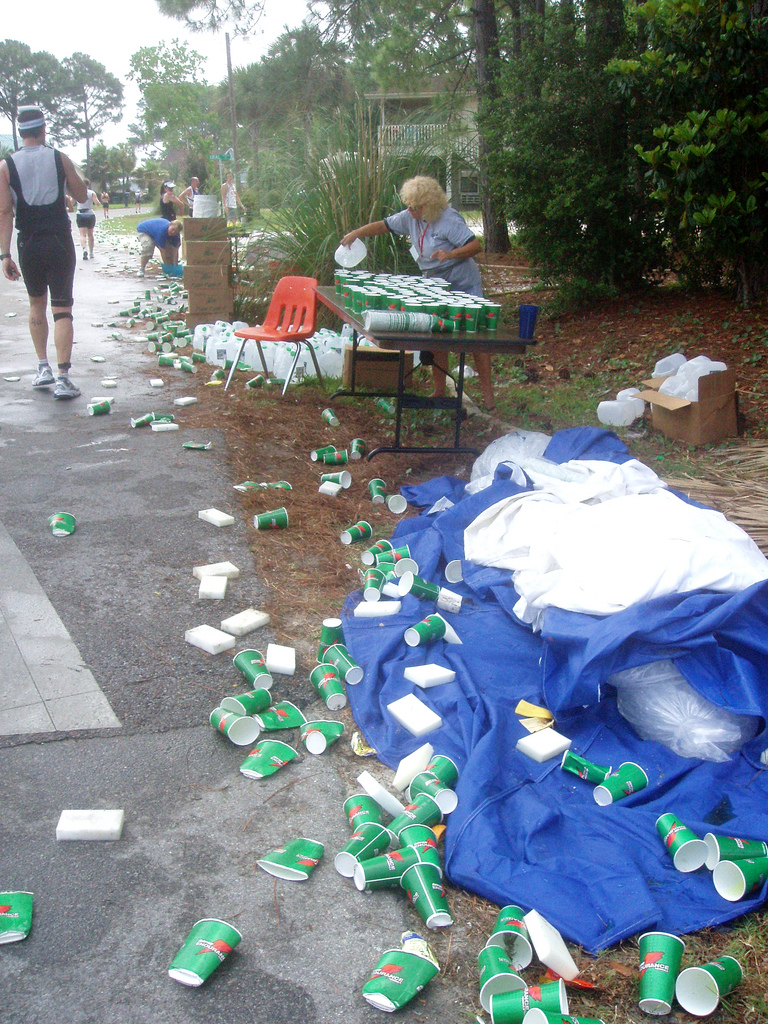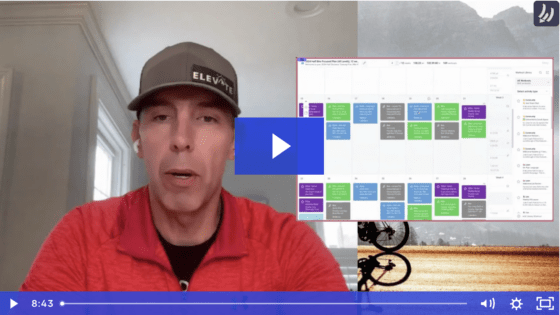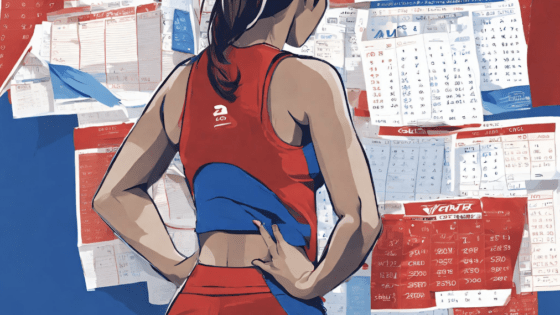We are entering the hottest part of the season: July and August. Pretty much wherever you live you’ll be experiencing some flavor of heat, humidity or both. It’s time to step away from your race pace calculator and take a healthy dose of reality: there’s simply no way you can race at your peak potential if your body isn’t 100% ready for the conditions.
The finish line of every triathlon is littered with bodies of athletes who “coulda shoulda woulda” had a great race if not for failing to address a specific challenge that arose on race day. Consider this article our attempt to help you avoid such a predicament.
#1 — Pick The Right Gear
If you know your race is going to be hot, you need to make some serious gear considerations. Please know that I am not advocating a white one-piece tri suit that is still on sale at your local store for 80% off…no heat is worth that kind of sacrifice!
Make sure your race outfit is not black, save for the shorts…color does matter. Your bike should have multiple places to store / hold fluids, critical as you’ll not only be drinking a lot but you’ll need the space to effectively use all the aid stations on your day. While we are talking about the bike, sunscreen is a critical component as well — no skimping! Use the water from aid stations to keep your head and body cool as well.
You’ll want a hat to keep the sun off your head and to hold ice in on the run! Consider a Fuelbelt (www.fuelbelt.com) to manage your running hydration between stations. You might want to avoid compression gear as it will most likely keep you hot, but cooling sleeves will keep the sun off you and retain some water.
#2 — Have A Personal Hydration Plan
Spend a few long workouts figuring out what your sweat rate is so that you know just how much fluids you should be taking in. There are plenty of online calculators that can help you out, but the key is actually taking the time to complete the tests. It’s a bit of extra work, but totally worth it if your race day is saved.
Your plan will give you input on not only how much fluids you need to take in but a good idea of how much sodium you need as well. The salt isn’t there as a magic anti-cramping tool, but rather to help move the water from your stomach to the rest of your body. For this reason alone, sports drinks trump water as your first choice on race day.
Once you have a plan, test it on a few key training workouts such as a race simulation (www.endurancenation.us/blog/bike/fatigue-ftp-your-final-weeks/). Merging your plan with the reality of your ride/run will help eliminate a great deal of race day friction.
#3 — Focus on Finishing Place, Not Time
Whether you know the race will be hot beforehand or you are surprised by a sudden race day heat wave, the effect is the same on your strategy: focus on place, not time.
All of your metrics and benchmark workouts were most likely conducted in much more amenable conditions than what you’ll face on race day. That great long run you had four weeks ago? It was a 78-degree day without a swim and a bike beforehand…simply not applicable here!
Instead of trying to hit these arbitrary targets, focus on being a smooth as possible on race day to eliminate spiking your heart rate. Dial in your nutrition plan to ensure you’ll have the fuel required to outlast the competition. Let them melt in the face of the heat by following their race plan from last month…you know better!
#4 — Adjust Your Pacing
Some sample benchmarks for adjusting your day are:
The Swim — Swim only as fast as your ability to maintain form. There is no excess exertion here…slow is smooth, smooth is fast!
The Bike — Ride the most steady effort you can, working to flatten all the hills (www.active.com/triathlon/Articles/Climbing-Smart-on-Race-Day.htm). If you have a heart rate monitor, you’ll want to watch your heart rate drop out of T1 before settling into a steady effort consistent with what you have seen in training. Expect your HR to be elevated by up to 5 or 7 beats…anything higher than that and you’ll need to back off again to preserve the run!
The Run — For every 5 degrees over 65-degrees, you’ll want to slow your goal pace by 3 seconds per mile. So if you planned on running 8:00/miles but it’s 95-degrees out, that’s six increments of five degrees, or 18 seconds slower per mile. Run conservatively from the outset making the most of the slower pace to get in more fluids and fuel which your competition isn’t!
#5 — Stay Cool on the Run
The most important factor isn’t speed, but rather how cool you can get (and stay!). Reducing your core body temperature for the run starts with the last aid station of the bike. You’ll want to grab extra water and douse your head and back and shorts…this water will run off long before you hit transition so it won’t interfere with your change.
On the run your first aid station is the most critical. Again, douse yourself fully with water, doing your best not to get your shoes wet. IF there’s ice, some of it goes into your hat (guys) or you jogging bra (ladies), as well as in your hands as you run out the other side. If you have cooling sleeves on, make sure these are wet as well.
Maintain this process for the next three aid stations at a minimum, as you continue to front-load your calories. All of this is possible given you slightly more conservative race pace. By the time the heat really settles in on the run, your competition will be facing the hardest final six miles of their lives and you’ll just be getting started.





Bradley Boomershine
GOOSEBUMPS! EN took me from October outseason to my first IM (13 hr) at IMKY in 2011! Execution was the key that day! Finished before dark, with a smile on my face, passing more than 202 “survivors” from Mile 18 to the finish! What a great experience, all because of what I learned through Endurance Nation!